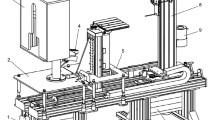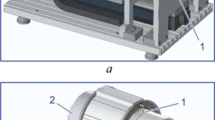Abstract
Objective
High-energy beta emitters such as Strontium-89 (89Sr) and Yttrium-90 (90Y) are becoming increasingly popular nuclear therapy sources in Japan for treating cancer. Various characteristics of materials must be considered when designing radiation protection device for high-energy beta emitters. We empirically measured and simulated dose equivalents of beta and bremsstrahlung radiation arising from 89Sr and 90Y radiation shielded with various materials and determined optimal shielding materials against these sources.
Methods
The dose equivalents of 89Sr and 90Y determined experimentally using an ionization chamber survey meter were compared with those of Monte Carlo simulations. The relative dose equivalents of beta and bremsstrahlung radiation separately transmitted by changing the thickness of acrylic, aluminum, iron, lead and tungsten shielding materials were simulated.
Results
Dose equivalents were consistent between the empirical measurements and the simulation to within ±5 %. Shielding ability was more effective in the order of tungsten, lead, iron, aluminum and acrylic against both 89Sr and 90Y. The amount of beta and bremsstrahlung radiation transmitted through tungsten and lead was relatively small. Although such high-density material generates much bremsstrahlung radiation, it absorbs the bremsstrahlung radiations.
Conclusions
Tungsten was the optimal material for efficient shielding against 89Sr and 90Y radiation and preferable among operators. The present findings provide useful information about how to define an appropriate shielding strategy for high-energy beta emitters.






Similar content being viewed by others
References
Kuwabara Y, Koizumi K, Ushijima Y, Kinuya S, Kinomura S, Suga K, et al. Nuclear medicine practice in Japan: a report of the sixth nationwide survey in 2007. Ann Nucl Med. 2009;23(2):209–15.
Cremonesi M, Ferrari M, Paganelli G, Rossi A, Chinol M, Bartolomei M, et al. Radiation protection in radionuclide therapies with (90)Y-conjugates: risks and safety. Eur J Nucl Med Mol Imaging. 2006;33(11):1321–7.
Rimpler A, Barth I. Beta radiation exposure of medical staff and implications for extremity dose monitoring. Radiat Prot Dosim. 2007;125(1–4):335–9.
Delacroix D, Guerre JP, Leblanc P, Hickman C. Radionuclide and radiation protection data handbook 2nd edition (2002). Radiat Prot Dosim. 2002;98(1):9–168.
Rimpler A, Barth I, Baum RB, Senftleben S, Geworski L. Beta radiation exposure of staff during and after therapies with 90Y-labelled substances. Radiat Prot Dosim. 2008;131(1):73–9.
Zanzonico PB, Binkert BL, Goldsmith SJ. Bremsstrahlung radiation exposure from pure beta-ray emitters. J Nucl Med. 1999;40(6):1024–8.
Van Pelt WR, Drzyzga M. Beta radiation shielding with lead and plastic: effect on bremsstrahlung radiation when switching the shielding order. Health Phys. 2007;92(Suppl 2):S13–7.
Eakins JS, Baker ST, Gibbens NJ, Gilvin PJ, Hager LG, Tanner RJ. Monte Carlo modelling of 90Sr/90Y and 85Kr beta fields for Hp(3) measurements. Radiat Prot Dosim. 2014;158(1):115–21.
Antić V, Stanković K, Vujisić M, Osmokrović P. Comparison of various methods for designing the shielding from ionising radiation at PET-CT installations. Radiat Prot Dosim. 2013;154(2):245–9.
Amato E, Lizio D. Plastic materials as a radiation shield for beta- sources: a comparative study through Monte Carlo calculation. J Radiol Prot. 2009;29(2):239–50.
Meo SL, Cicoria G, Montini G, Bergamini C, Campanella F, Pancaldi D, et al. Radiation emission dose from patients administered 90Y-labelled radiopharmaceuticals: comparison of experimental measurements versus Monte Carlo simulation. Nucl Med Commun. 2008;29(12):1100–5.
Sato Y, Yamabayashi H, Nakamura T. Internal dose distribution of 90Y beta-ray source implanted in a small phantom simulating a mouse. Radioisotopes. 2008;57(6):385–91.
Agostinelli S, Allison J, Amako K, Apostolakis J, Araujo H, Arce P, et al. GEANT4: a simulation toolkit. Nucl Instrum Methods Phys Res A. 2003;506:250–303.
Allison J, Amako K, Apostolakis J, Araujo H, Arce P, Asai M, et al. Geant4 developments and applications. IEEE Trans Nucl Sci. 2006;53:270–8.
Jødal L. Beta emitters and radiation protection. Acta Oncol. 2009;48(2):308–13.
Fukano S. Calculation of bremsstrahlung energy spectrum induced by beta ray. Radioisotopes. 2003;52(9):464–70.
Fukano S. Calculation of permeability of bremsstrahlung generated inside the shield. Radioisotopes. 2009;58(8):517–36.
Acknowledgments
The authors thank the staff of the Department of Radiology and Nuclear medicine at Cancer Institute Hospital of Japanese Foundation for Cancer Research (JFCR) for providing valuable clinical support. This study was supported in part by a Grant-in-Aid from the Clinical Research Center at the Cancer Institute Hospital of JFCR.
Conflict of interest
The authors declare that they have no conflict of interest.
Author information
Authors and Affiliations
Corresponding author
Additional information
T. Murata and K. Miwa contributed equally.
Rights and permissions
About this article
Cite this article
Murata, T., Miwa, K., Matsubayashi, F. et al. Optimal radiation shielding for beta and bremsstrahlung radiation emitted by 89Sr and 90Y: validation by empirical approach and Monte Carlo simulations. Ann Nucl Med 28, 617–622 (2014). https://doi.org/10.1007/s12149-014-0853-6
Received:
Accepted:
Published:
Issue Date:
DOI: https://doi.org/10.1007/s12149-014-0853-6




